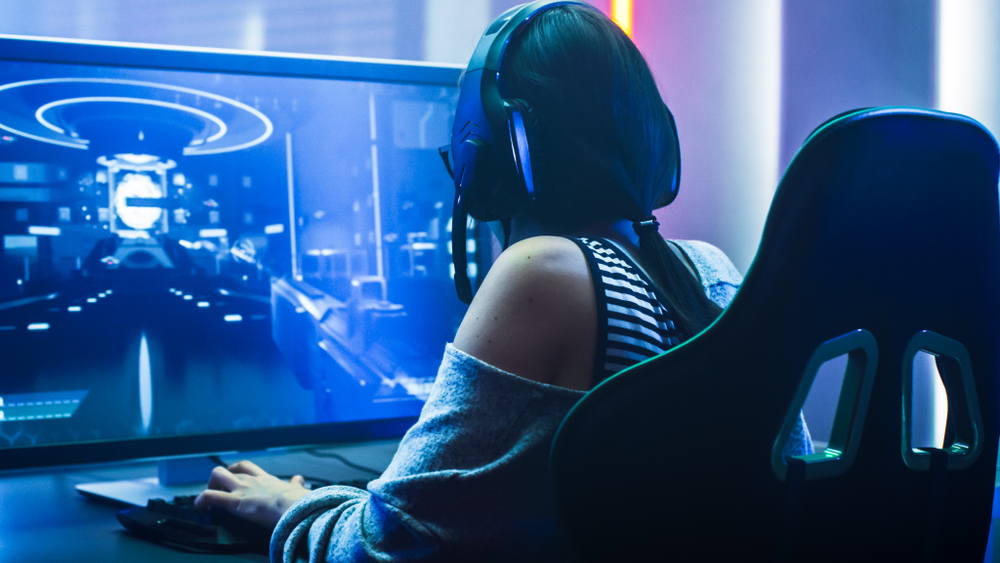E-sports has become serious business. But just as interesting is that many IT teams have a lot to learn from the way e-sports players know how to improve their own performance. Data & analytics plays a key role in this. E-sports is fast becoming one of the biggest crowd-pullers in the world. While for many parents gaming still has the reputation of not very socially adept adolescents who play shooting games late into the night, the reality is very different. Not only does e-sports attract tens of millions of gamers and viewers worldwide, it also generates billions in revenue. The global e-sports market is expected to grow from about $1.44 billion in 2022 to $5.48 billion in 2029. Research firm Fortune Business Insights predicts an average annual growth rate of 21 percent through 2029.
Are you interested in e-sports and the topic of Data & Analytics? Dutch e-sports organisation Team Liquid will join us at the SAP Discovery Day for Analytics & Integration on October 31.
Register here
Gil Lieveld of the e-sports company Aoma, sometimes gets a little despondent about it. “A child who is good at – say – playing korfball is called ’talented,’ but with a child who is good at gaming, it quickly becomes ‘a problem’. While the alleged disadvantages of gaming have long since been scientifically refuted, the advantages often remain underexposed.” Lieveld – who has some forty gamers under contract – therefore regularly gives presentations at schools and colleges, among other places. “Because we have a lot of talent walking around in the Netherlands, but because of the prejudices they are not yet really coming into their own.”
Performance
The coaching and mentoring of gamers is also becoming more professional. “We are increasingly using analytics, although we are not yet at the level of the absolute top teams in Korea, for example,” says Jelle Markx, one of the coaches at Aoma. Markx (23) graduated from the Academy for Physical Education (ALO) of the Hogeschool Amsterdam. He is now doing a master’s degree in exercise science at the VU. “What I emphatically try to do is transfer the philosophy of exercise science to professional gamers. From my education I have always had a great interest in performance – also in e-sports. I am a gamer myself, but for me it is mainly about the question: why does one gamer perform better than another? What factors are involved? And why does the performance of gamers vary during a game? Is it something mental? Is it physical fitness? Is it pure technique? Driving insight? For an e-sports company like Aoma, that’s crucial knowledge.”
Movement theory definitely plays a role here, Markx argues. “However, it starts with data. Big games like Valorant or League of Legends already make a lot of data available. In principle, any gamer can access that, but the question is how you interpret that data and what exactly you do with it.”
Besides the statistics provided by the games themselves, there are numerous tools that coaches and teams can apply, such as websites like Vlr.gg or Blitz.gg. Markx: “Here a lot of data is collected about games but also about individual gamers, so that you can, for example, compare the performance of your own gamers and your own team against others. We also see more and more artificial intelligence tools emerging. They can provide insights that make just the difference against a competing team.’
Lessons for It-teams
What is interesting about the role of e-sports coaches is that they are aware of the impact that mental resilience, physical fitness and more mechanical aspects such as hand/eye coordination and reaction time, among others, can have on team members. This is where it departments and it teams can learn from. For example, Mai Fenton, marketing director at British tech-scale-up Superscript, argues in a blog on Linkedin that the experiences, which coaches have gained with e-sports teams, can help remote working it teams perform better.
“For example, e-sports teams don’t necessarily have a team leader. Some teams may have a captain, but the style of leadership is not that of an authoritarian, hierarchical leader who makes all the decisions. In fact, in many it teams that have gone remote, the old, hierarchical relationships are maintained. Looser and more informal collaboration, as is the case with e-sports teams, benefits productivity,” Fenton said.
Viktor Jendeby, a professional coach of the video game Counter Strike, is also of that opinion. He now also leads business teams, applying his e-sports experience emphatically. For example, as team captain, Jendeby rarely gives assignments, but rather offers team members every opportunity to come up with their own ideas and suggestions. His team’s performance clearly benefits from this in his eyes, he says in an interview published by his employer, the Swedish company Stryda.
The aforementioned Fenton goes on to say, “In e-sports, each player has an important role that is modified as the game progresses. This, because in e-sports the environment and competition are constantly evolving. There is no one initial game plan to follow. Players must be able to make decisions as the game evolves. Essentially, it’s about following the flow of the game, not following the orders of a team leader.”
Continuous data collection
“Resistance to capturing and analyzing data hinders continuous performance improvement”
Also interesting is the attitude that e-sports teams have toward the continuous collection of data and statistics. Traditional it-teams tend to see capturing statistics on performance, speeds, errors and the like per team member and for the entire team as threatening. But is that the right attitude? E-sports shows that you can look at this differently. The data collected provide a realistic picture of what is going well and what could be improved. As an individual team member, but also as an entire team. Resistance to recording and analyzing data then quickly stands in the way of continuous performance improvement.
Fenton also points to the role of ‘soft skills’ on LinkedIn. “Soft skills are defined as personal traits that enable a person to interact effectively and harmoniously with other people. To win, e-sports teams need good technical skills, such as accuracy, but also soft skills for team cohesion. Those include cooperation and teamwork, effective communication, creativity, risk-taking and problem-solving under pressure.”
This is another best practice that it teams can benefit from: remember that in addition to technical skills that can be demonstrated with degrees and certificates, for example, there is also a human, psychological side. How do you perform best as a team, especially when there is a lot of pressure on the work as happens, for example, during a serious security incident or a major outage?
Better decisions
As a coach, Markx can imagine that best practices in e-sports can be applied well to other environments, such as IT departments. “With us, teams play two to three games a week. All those games are recorded and we collect all the data we can. Based on that, we start analyzing in detail: what goes right, what goes wrong? That also helps in talking, training and guiding individual gamers. This gets them into that aforementioned flow. Once you are in such a flow, I believe every team will perform better – not just an e-sports team.”
The parallels with it teams are obvious. If the data show that a security specialist or a developer suddenly starts making more mistakes than usual after a certain amount of highly focused work, this can be remedied or prevented, for example, by taking a break in time. If all kinds of data about the tasks and activities are recorded in the background, it quickly becomes clear how, for example, the number of errors can be reduced.
Non-threatening
Generic solutions like drinking fifteen minutes of coffee can then already have a lot of impact. But data analysis can also provide individualized solutions. Where one person only needs fifteen minutes of coffee to get back to his old performance level, for another ten minutes of table tennis or even twenty minutes of walking outside may have a much greater effect on the performance level.
The same applies to aspects such as ergonomics, the keyboard used, the lighting in the room where work is done, or the amount of background noise or lack thereof. Anyone who collects a lot of data about tasks and activities and, for example, speeds and numbers of errors and recoveries, soon comes across that kind of relationship. This can be done with ai, but often also without ai. In many cases, it will require a change in mentality: capturing data about the work an IT specialist does need not be threatening at all. On the contrary, it can help everyone personally to perform well and work pleasantly. Provided, of course, that good agreements are made about the collection and use of data.
IT companies and e-sports/sports
Just as Formula 1 is seen by many as a testing ground for new technology that will show up in regular cars a few years later, e-sports is still sometimes seen as a market where the demands on the it infrastructure are pushed to the point where they are the forefront of more traditional it. This is why companies like Aoma and Team Liquid (another Dutch e-sports team) are also always strongly interested in collaborating with it specialists. Sometimes to host games and training sessions or to use tools to analyze huge amounts of game data. But in other cases also to develop entirely new analytical software themselves.
“With good software developers and other it-specialists, you often see that they are just as focused on their activities as the professional gamers we work with. That also often makes working closely with it-specialists very logical – and fun – for us,” notes Gil Lieveld of Aoma.
Team Liquid has been working with SAP for a number of years, especially when it comes to analytics. The software of the German software concern is also regularly used in sports for analyzing (team) performance of teams, but also for optimizing fan experience, for example.
For example, for several years SAP provided technology for tennis players participating in WTA tournaments. Complete matches were recorded with cameras, capturing data such as ball speed, the position of the players, the angle at which a ball is hit or returned, the location where the ball hits the gravel and the like. On the one hand, there is a purely technical story behind this. For example: at what speed is a ball served? But on the other hand, it also helps the coach in communicating with the player. Using hard data, for example, it is possible to analyze exactly where a player stands when her opponent serves. Sometimes moving a few centimeters to the left is enough to catch a service that is difficult to return much better. But if the tennis player herself is convinced that she is positioned exactly right, while the coach wants to see that step aside, it helps if the hard data indicate that the player really was not in the position she thought she was.
Are you interested in e-sports and the topic of Data & Analytics? Dutch e-sports organisation Team Liquid will join us at the SAP Discovery Day for Analytics & Integration on October 31.
Register here


